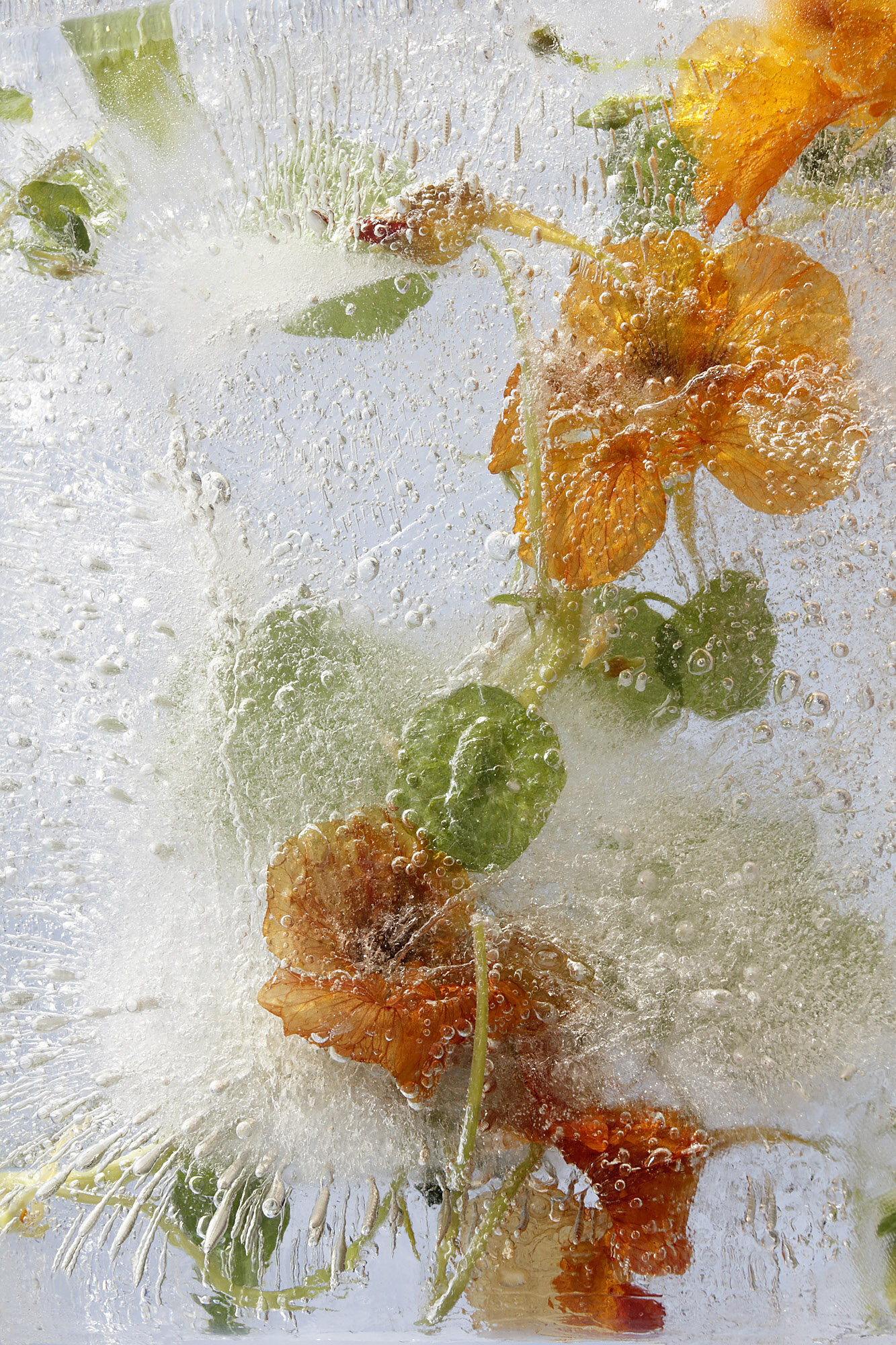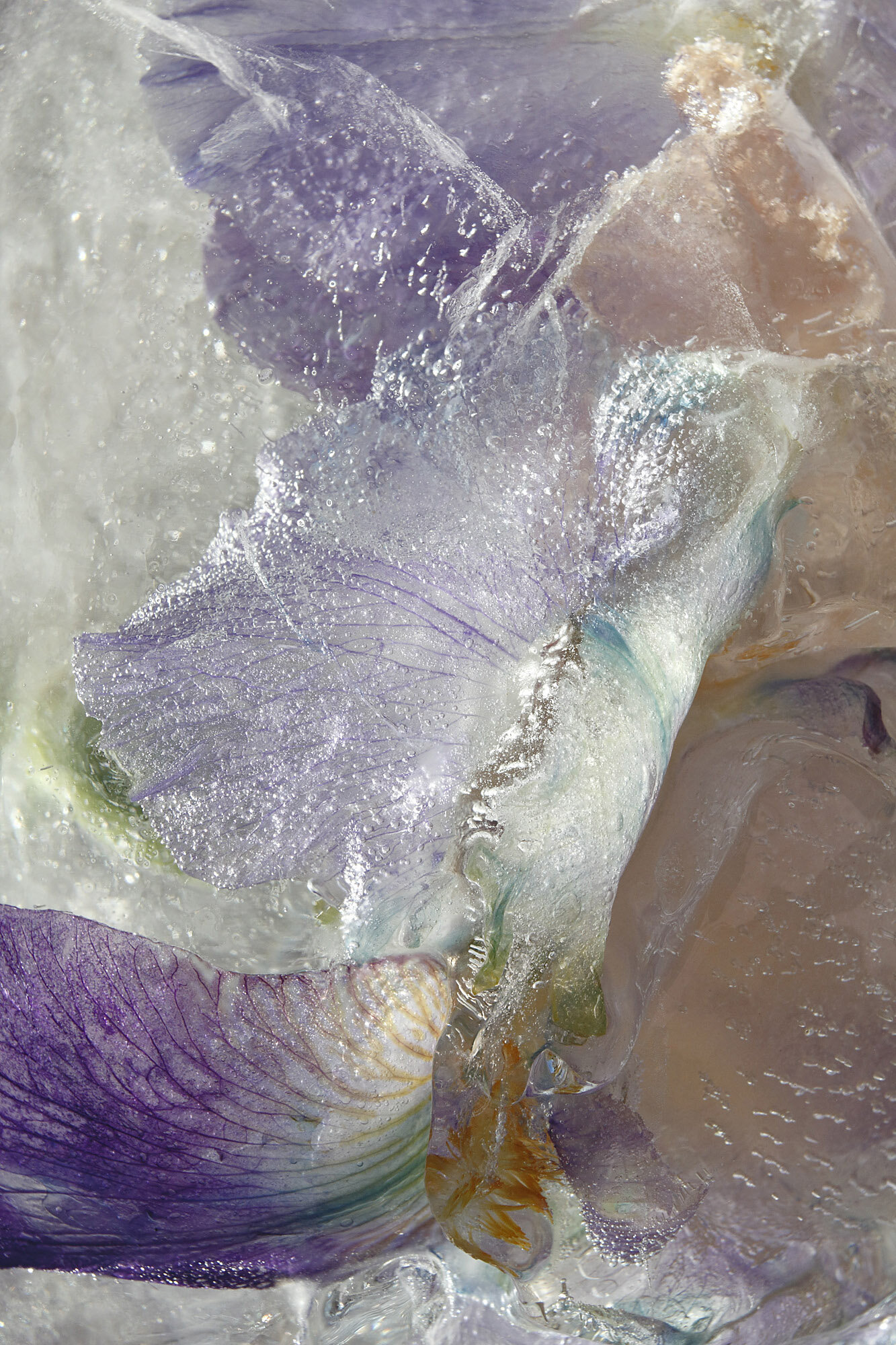Mary Kocol
There is a photograph by Mary Kocol in the collection at Danforth Art, August Backyard (1989), which is remarkable for its balance between interior and exterior, light and dark, and vitality and stillness. In her view of a backyard and surrounding houses bathed in the blue hue of twilight, Kocol manages to capture a singular moment, frozen in the fading light. It is this quality of capturing the moment, and conveying a sense of both vitality and stillness, that connects a piece I have spent considerable time with to her more recent Ice Gardens series.
The ten works on view here are vibrant, colorful, alive, and . . . still. Part of the stillness is conveyed through the use of the photographic medium, but a majority of it derives from the crystalline forms that define the compositions. Ice encases flowers from the gardens of the artist, her family, and friends. The ice has captured each floral at a moment where the viewer is unable to tell if they were blooming or fading, decay could have been mere moments away when the ice took over. Kocol mentions that her work is “informed by the Victorian era’s fascination with the language of flowers,” and her perfectly captured roses and irises also remind us of the Victorian era’s fascination with the preservation of the temporal. A moment from her garden captured in ice recalls a treasured and preserved wedding bouquet or lock of hair. In this way, Kocol’s works function as a memento mori, reminding us that beauty is both fragile and ephemeral.
- Jessica Roscio, Curator at Danforth Art and contributor to the Initiative
he suspended blooms are evocative of the garden as portrayed in High Art painting: the whimsical floral details in Botticelli’s painting Birth of Venus, where flowers fall against sky and sea; Van Gogh’s almond tree blossoming against horizon-less blue; vintage seed packages and botanical drawings; and the morning glories in Japanese prints. The work is also informed by the Victorian era’s fascination with language of flowers.
Ice is temporary; the photograph becomes the permanent art object—the record that it once briefly existed. As the water changes into ice, the plants drift and float before freezing into place. Sunlight brings radiance to the ice plate, lighting up the ice and frozen blooms into something fanciful and ethereal. Then the unexpected details are revealed—often accompanied by the scent of the flowers, roses especially, permeating through the ice block. Ice is depicted in a way that we’re not used to seeing it: with sunlight beaming through, revealing intricate details of fissures and effervescence.
The suspended blooms are evocative of the garden as portrayed in High Art painting: the whimsical floral details in Botticelli’s painting Birth of Venus, where flowers fall against sky and sea; Van Gogh’s almond tree blossoming against horizon-less blue; vintage seed packages and botanical drawings; and the morning glories in Japanese prints. The work is also informed by the Victorian era’s fascination with language of flowers.
These botanical ice tablets where created from gardens of friends, family, and my own. I experience real delight in making this work, while being reminded of what it reflects: that which is exquisite, spiritual, and ephemeral.
- Mary Kocol
Visit Mary










